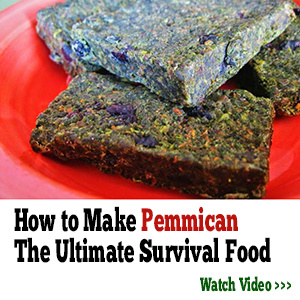
When the grid goes down, you’re going to realize that virtually all the food you eat is already cooked. Of course you know that you have to cook your meat, poultry, fish, etc., but most of the things we consider to be outside of the need-to-be-cooked category have been cooked, just not by you. So to avoid surviving off of stale peanuts and cracker jacks, here are five foolproof methods that even the most inexperienced of preppers can employ.
Wood Fire
A wood fire may be the most primitive means of cooking, but, at the beginning of everything, the cavemen obviously had the right idea. Even now in modern times, there’s a significant percentage of the world (especially in developing countries) that still utilizes this method in their day-to-day lives.
While we- in our cushy, first-world lifestyles- may look upon it as a novelty associated with the occasional camping trip, to the rest of the population, it’s perfectly normal and sustainable. (Why fix what isn’t broken?) Lucky for you, there’s more than one way to go about it. Here are a few:
Fireplace/Fire pit
Clay oven
Dutch oven
Wood-burning stove
Open fire
Grill
The beauty of your backyard grill during a crisis is just how versatile it’ll turn out to be. You already know how to cook your steak to rare perfection, or how to grill your wings in the way that makes all your buddies fight for the last one, but the reality is that your options aren’t limited to your family cookouts.
With enough practice, you can cook up anything from vegetables to mac-n-cheese. Be careful with your pots and pans, though. These days, the majority of cookware is made cheaply with thin, enamel-coated metal and Teflon, which will react badly to the intense heat. For all of these listed methods, cast-iron is your best bet.
Lastly, if you own a gas-grill, always have at least one extra tank stored away for when you can’t just run out and grab a refill. If your grill runs on charcoal, you can use wood, but you’ll have to let it all burn down to coals for the best results. Make sure you know how to start a fire in your charcoal without lighter fluid, too.
Camping Stove
For those of you who have ever pursued camping as a hobby, you’re probably already familiar with camping stoves in one form or another. If not, you’ll find they’re actually pretty easy to use in the place of a regular stove. There are a few things you should be aware of, though.
First, most of these run on those tiny, expensive bottles of propane gas. They’ll drain your wallet and drag you down when you’re on the move. Instead, opt for an adapter that will allow you to refill your little bottle from a full-sized propane tank (the extra one that you had stored away for your grill).
If neither of these ideas appeal to you, there is the option of the ‘dual-fuel stove’, which doesn’t run on propane at all (Coleman makes a good one). With this model, you add fuel to the tank and then pump it to pressurize it. It’s dubbed ‘dual-fuel’ because it will run perfectly on either Coleman’s canned fuel or straight gasoline, which will be one of the most accessible forms of fuel at TEOTWAWKI.
Solar Oven
Now before you get ahead of yourself, remember that this is survival, not your 9th grade science project. So unless you really know what you’re doing, put down your cardboard box and tin foil and invest in a real solar oven (trust me on this one).
The concept is actually pretty simple: once it hits the black surface inside the oven, the sunlight is converted into heat. The temperature rises as reflectors increase the amount of sunlight that comes into the oven, which is then trapped by the glass or plastic you’ve chosen as the cover. This approach takes a little time, but should still be watched carefully. There’s no room for waste in your rations.
Solar Fresnel Cooker
Remember when you used to set leaves on fire using a magnifying glass? Well congratulations, you’ve already mastered this method. You can find Fresnel lenses in the form of flat magnifying glasses (with concentric circles molded into the back) at the dollar store, on eBay, or behind the screen of any old-timey t.v.
For this method, you’ll need to find a frame to mount your lense in and then place your food at the focal point (probably around two feet below the lense). The solar cooker works quicker than the solar oven, and all you need are a few tools and a clear sky.



